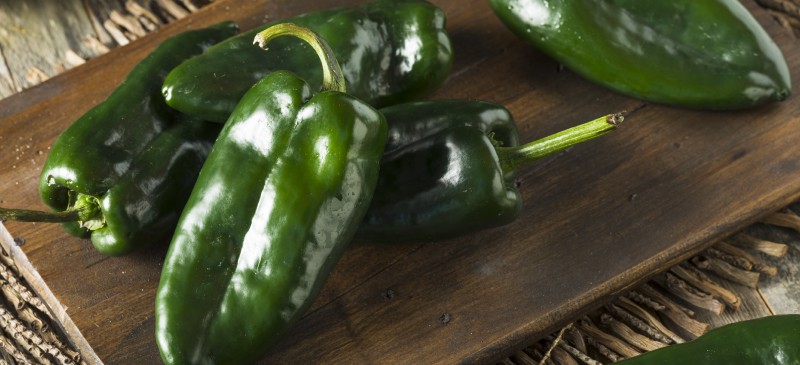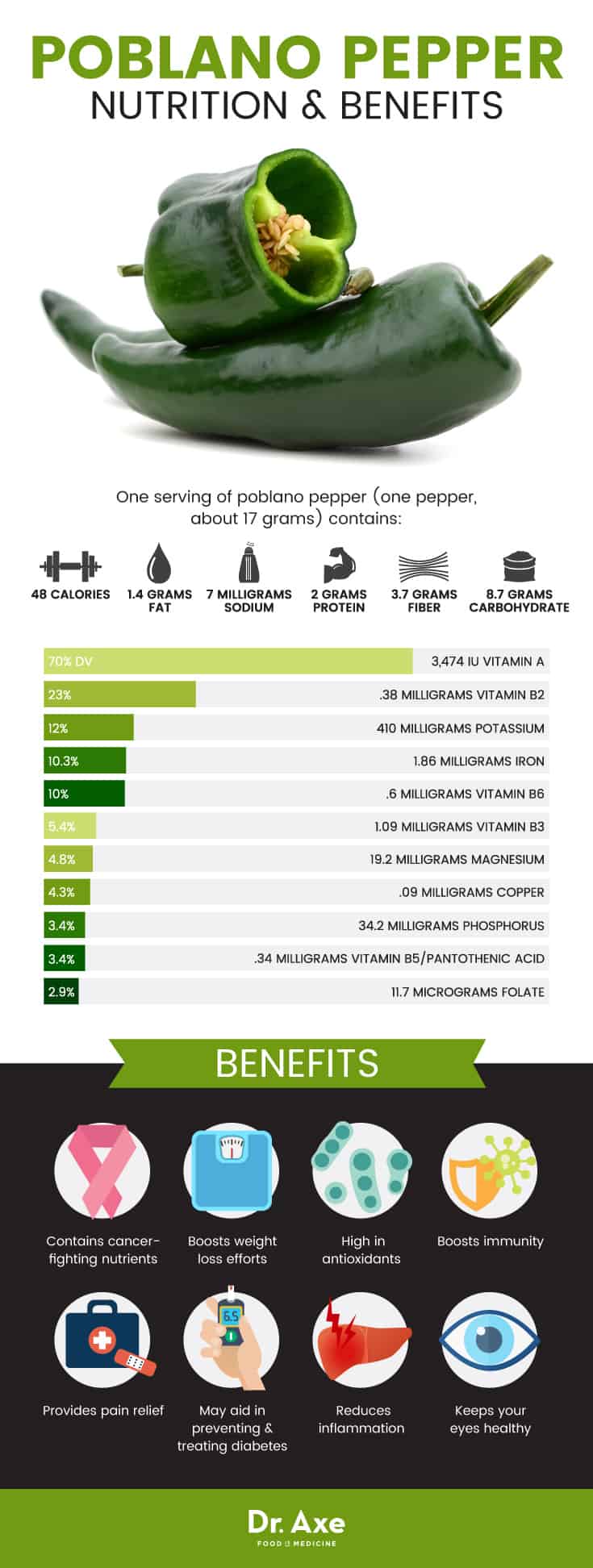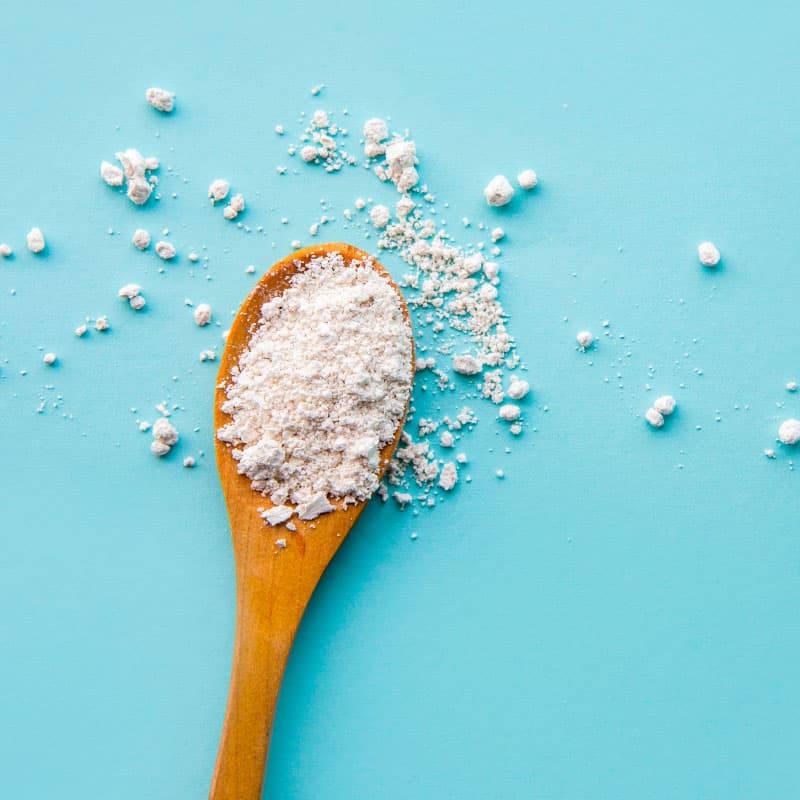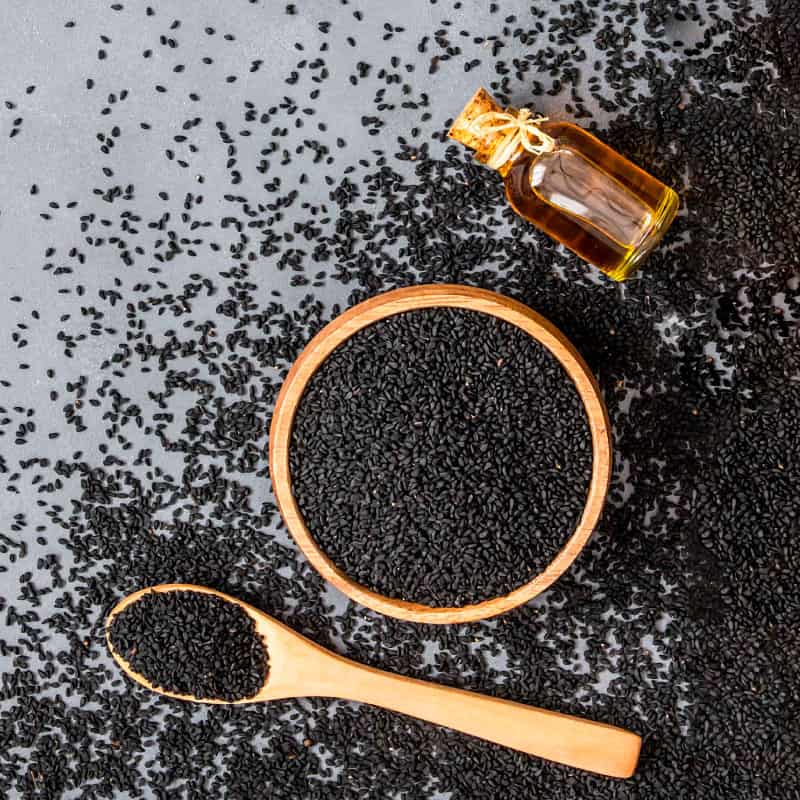This Dr. Axe content is medically reviewed or fact checked to ensure factually accurate information.
With strict editorial sourcing guidelines, we only link to academic research institutions, reputable media sites and, when research is available, medically peer-reviewed studies. Note that the numbers in parentheses (1, 2, etc.) are clickable links to these studies.
The information in our articles is NOT intended to replace a one-on-one relationship with a qualified health care professional and is not intended as medical advice.
This article is based on scientific evidence, written by experts and fact checked by our trained editorial staff. Note that the numbers in parentheses (1, 2, etc.) are clickable links to medically peer-reviewed studies.
Our team includes licensed nutritionists and dietitians, certified health education specialists, as well as certified strength and conditioning specialists, personal trainers and corrective exercise specialists. Our team aims to be not only thorough with its research, but also objective and unbiased.
The information in our articles is NOT intended to replace a one-on-one relationship with a qualified health care professional and is not intended as medical advice.
Poblano Pepper Fights Cancer and Boosts Fat Loss
January 9, 2020

That spicy, tingly feeling you get from eating hot peppers like the poblano pepper is more than just delicious — it can help fight cancer, aid your weight loss journey and boost your immune system.
The poblano pepper is a delightfully earthy pepper, between the banana pepper and jalapeno in terms of heat. It’s the chosen ingredient in the famous chile relleno (who doesn’t like that?) and has a great number of amazing nutrients in every serving.
It’s just hot enough to contain the cancer-fighting power of capsaicin without burning your mouth and contains antioxidants that are guaranteed to make your body happy. So, add it to your grocery list — after reading all the benefits it offers, of course.
What Is the Poblano Pepper?
The poblano pepper is one of about 27 varieties of peppers, all belonging to the Capsicum annuum family (although only half of them are commonly eaten by people). Occasionally, it’s referred to by its specific name, Capsicum annuum poblano L.
Many people know of the dried version of poblano peppers known as the ancho chile. They’re occasionally referred to incorrectly as “chipotle,” but that word specifically refers to dried jalapenos.
All peppers belong to the nightshade family of vegetables. They all originate from somewhere in the “New World,” from Mexico into various parts of South America. The poblano pepper was first cultivated in Puebla, Mexico (which is also how it gained the name “poblano”).
The poblano pepper plant grows as high as just over two feet, yielding wide and short green or red peppers. Red poblanos are spicier than green varieties, although they both start out as a purplish-green color before they ripen.
Nutrition Facts
As nutrition goes, poblano peppers are a pretty jackpot item, especially for something that tends to be the shell or add-on to dishes rather than a main dish. Just one medium-sized pepper (around 4.5 inches long and 2–3 inches wide) contains almost ¾ of your recommended daily intake of vitamin A and a quarter of the vitamin B2 you should consume every day.
One serving of poblano pepper (one pepper, about 17 grams) contains about:
- 48 calories
- 8.7 grams carbohydrates
- 2 grams protein
- 1.4 grams fat
- 3.7 grams fiber
- 3,474 IU vitamin A (70 percent DV)
- 0.38 milligram vitamin B2 (23 percent DV)
- 410 milligrams potassium (12 percent DV)
- 1.86 milligrams iron (10.3 percent DV)
- 0.6 milligram vitamin B6 (10 percent DV)
- 1.09 milligrams vitamin B3 (5.4 percent DV)
- 19.2 milligrams magnesium (4.8 percent DV)
- 0.09 milligram copper (4.3 percent DV)
- 34.2 milligrams phosphorus (3.4 percent DV)
- 0.34 milligram vitamin B5/pantothenic acid (3.4 percent DV)
- 11.7 micrograms folate (2.9 percent DV)
Related: Chili Pepper Benefits for Pain, Blood Pressure, Digestion & More
Benefits
1. Contains Cancer-Fighting Nutrients
Several of the main nutrients found in poblano peppers are known for their roles in the fight against various types of cancers. For example, one poblano pepper contains about 25 percent of the recommended daily value of vitamin B2, or riboflavin — more than a single egg, which is one of the top riboflavin foods.
Riboflavin has been shown to have a positive effect in preliminary tests with colorectal cancer cells. (1) More generally, riboflavin acts as an antioxidant against cancer cells and is also necessary for the production of glutathione, which is another anticancer antioxidant.
Like most peppers, poblanos contain capsaicin, the nutrient that gives peppers their heat. Although it ranks relatively low on the Scoville scale, the poblano pepper does contain a significant amount of capsaicin, which means you reap the benefits of the nutrient to matter scientifically.
This is relevant because capsaicin is one of those plant-based substances researchers have been seriously testing for years in connection with potential cancer treatments. So far, the list of cancers capsaicin has been researched in connection with on both humans and animals is a long one: prostate, gastric, breast, primary effusion lymphoma and lung cancer. (2, 3, 4, 5, 6)
The amount of capsaicin in poblano peppers is affected by the point in development that they’re harvested. There’s a “sweet spot” where the capsaicin production peaks, right before the vegetable over-ripens, that’s the perfect time to harvest for the health benefits capsaicin has to offer. (7)
Cultivars of peppers like the poblano also seem to have anticancer properties against oral cancer. (8) Another method by which the poblano may help fight cancer is by disrupting a process called “nitrosation,” by which some organic compounds can be converted into carcinogenic molecules. (9)
Related: Top 12 Cancer-Fighting Foods
2. Helps You Lose Weight
It’s not a surprise that a food so low in calories per serving would be a good addition to a diet designed to help you lose weight fast, but a low calorie count isn’t the only thing these peppers have to offer.
Again, one winner here is capsaicin. Capsaicin has been associated with a decreased body weight, boosted metabolism and appetite suppression in animal studies. (10) It may even be able to aid in preventing obesity, as it showed promise in a study conducted with mice. (11)
Peppers like the poblano may also help maintain a healthy “lipid profile,” which means the concentrations of various substances in your blood. Having a good lipid profile means a lower level of fat and is also indicative of a reduced risk of metabolic diseases related to obesity. (12)
3. High in Antioxidants
One benefit of poblano peppers that’s far-reaching is that of their antioxidant capacity. One pepper contains enough vitamin A to almost cover your daily required intake, and vitamin A is an antioxidant that protects many different parts of the body from damage caused by oxidative stress.
Vitamin A is known for its role in protecting the eyes from damage, especially related to age, as well as its ability to keep the skin healthy, slow outward signs of aging and also fight cancer.
There are other antioxidants found in poblano peppers, including quercetin. (13) Like Vitamin A, quercetin can help keep skin healthy and prevent or slow the growth of cancers. It may also reduce allergy symptoms, increase physical performance and protect your heart from damage.
4. Boosts Immunity
Poblano peppers can even help boost the strength of your immune system. Vitamin A has a very significant part in the immune response of the body to everything from the common cold or flu to malaria. (14)
Vitamin A regulates the genes related to immune system responses, so consuming a large amount of it is important to maintaining a healthy immune system.
5. Provides Pain Relief
The nutrients in poblano peppers work together to provide powerful, natural pain relief.
Because poblano contains quercetin, it’s part of a diet created to reduce inflammatory pain, like that of arthritis, prostate infections and respiratory infections. (15)
Capsaicin is also effective in treating various types of pain, including inflammatory responses as well tendon damage and cluster headaches, a rare but incredibly painful headache condition.
Along with capsaicin, vitamin B2 found in poblano pepper can also serve as a natural headache remedy, while the potassium it contains is part of preventing cramping pain from muscle strain and even PMS.
6. May Aid in Preventing and Treating Diabetes
As noted earlier, poblano peppers have a great nutritional profile for only a few calories. They also help improve lipid profile and may serve in preventing metabolic disorders associated with obesity, one of which is diabetes.
Capsaicin in poblano peppers also has an impact on diabetes-related factors, improving the insulin response and post-meal blood sugar changes in diabetic patients. (16)
7. Reduces Inflammation
Did you know that inflammation is at the root of most diseases? That’s why Western culture sees such a high rate of common and preventable diseases — we often fill our diets with foods like processed sugars and grains that are known to cause inflammation rather than prevent it.
Peppers are a top anti-inflammatory food. They reduce chronic inflammation because of the presence of antioxidants specifically targeting inflammation, such as quercetin and vitamin A. Quercetin is already currently prescribed to patients for inflammatory conditions, including certain heart problems, allergies, gout, prostate infections, skin disorders and various others.
Vitamin A also reduces overall inflammation in the body and is associated with a decreased risk of chronic diseases related to inflammation.
8. Keeps Your Eyes Healthy
A common feature of antioxidants is their ability to protect the health of your eyes, and don’t forget, you only get one set.Vitamin B2 has been known to help prevent eye diseases like glaucoma, cataracts and keratoconus. (17)
On the other hand, vitamin A has been connected with a lowered risk of macular degeneration as well as a treatment for dry eyes. It’s even a potential preventative or treatment measure for a rare eye disease known as Stargardt’s disease that can cause severe vision loss in the young, a form of macular degeneration. (18)

Poplano Pepper vs. Serrano Pepper and Bell Pepper
When discussing different peppers, it’s important to know the benefits of various kinds and the unique nutrients they may offer. Two peppers often compared to the poblano pepper are the bell pepper and serrano pepper.
What do they have in common?
First, let’s look at the commonalities between these three types of peppers. All three contain high levels of antioxidants, leading to all providing some protection against heart disease, eye disease, cancer, and skin disorders and diseases.
Bell peppers, serrano peppers and poblano peppers also help boost the performance of your immune system through various avenues. Interestingly, though, they don’t all do this with the same nutrients.
All three of these peppers (and, indeed, all pepper varieties) also aid in weight loss and support a diet for healthy metabolism.
What’s different about them?
The most noticeable difference between these three cultivars of pepper is their heat levels. Bell peppers contain no capsaicin and, therefore, are not spicy (although they’re delicious!). The poblano pepper finds itself right in the middle of the list, ranking between 1,000–1,500 on the Scoville scale. For an example of how to compare this, the ranking means poblanos are marginally hotter than a hot banana pepper and about three to five times less spicy than a jalapeno.
The serrano pepper, on the other hand, ranges anywhere from five to 25 times hotter than poblano peppers — the smaller the veggie, the hotter it is.
Since the bell pepper contains no capsaicin, the benefits provided from serrano and poblano peppers related to this nutrient don’t necessarily exist in bell peppers. But this doesn’t mean they’re less healthy by any means. In fact, bell peppers contain 253 percent of the daily recommended value of vitamin C, which also helps immunity and antioxidant activity. In contrast, serrano peppers contain almost 80 percent of the recommended value while poblano contains none (or negligible) of that vitamin.
The poblano pepper contains much more vitamin B2 than the serrano pepper, and the bell pepper contains none.
As far as individual benefits, bell peppers are known for their ability to maintain and potentially improve mental health, as well as support healthy pregnancy from a significant level of folate in each serving. (Folate is also found in serrano and poblano peppers, but in much smaller quantities.)
Serrano and poblano peppers both help reduce pain in various ways, especially due to the presence of capsaicin. Both also may help reduce the risk or severity of diabetes.
Serrano peppers are also an approved treatment for shingles, according to the U.S. Food and Drug Administration.
How to Cook
Preparation methods include roasting poblanos, coating them in egg whites and frying them, stuffing and baking them, and of course, the popular chile relleno, which incorporates all three of these.
When roasting poblano peppers, you first must choose your preferred method. Cooking over an open flame is the most traditional method, but you can also broil them in order to prepare several peppers at once. You’ll turn them every few minutes to ensure even roasting, and after 6–9 minutes they should be charred and blistered on the outside with a soft, chewy inside.
After they’re hot and have begun to char, take them out of the oven or off the flame and seal them in plastic to allow them to “sweat” for around 20 minutes. After this time, holding them under cold water, begin to peel the skin, starting with blistered areas. It’s wise to use gloves or a paper towel to avoid burning your skin, due to the capsaicin in the peppers.
Wipe them down once more after the skin is removed with a wet paper towel, and then remove the inside flesh and seeds. Depending on how you intend to cook them, you’ll do this differently — either by cutting off the top and opening the pepper flat, or by slicing a hole into the side and spooning out the insides, which would be the chosen method if you intend to use them for chile relleno.
Recipes
Peppers are extremely versatile, but there are a few delicious ways that I like to enjoy my poblano chiles. You may want to try this Butternut Squash Enchilada Casserole, which also affords you the extra boost of immunity, antioxidants and cancer-fighting nutrients in butternut squash.
If you’re looking for an adventure, try a Poblano Chicken Bulgur, which will provide a great amount of fiber and all the benefits of kefir.
And if you’re simply wanting to go the traditional route, try a Chile Relleno. You can try many different varieties, but the most classic version just contains cheese inside.
Risks and Side Effects
While poblano peppers are great for your health in many ways, there are a few things to consider. First, it’s possible to be allergic to foods in the nightshade family because of the presence of alkaloids. If you suffer from inflammatory problems, including leaky gut, you should consult your doctor to find out if you’re allergic to these varieties.
Chile pepper types can also initiate gastroesophageal reflux in some people, especially those with sensitive stomachs. (21) Consult your doctor if pepper ingestion causes you to have consistent stomach and bowel problems.
Final Thoughts
- The poblano pepper is a fairly mild pepper, ranking somewhere between the banana pepper and jalapeno on the Scoville heat scale.
- It’s in the Capsicum annuum family of peppers and has two main varieties, red and green. The green is more common, while the red is hotter.
- One serving has only 48 calories but 70 percent of the daily recommended value of vitamin A, a powerful antioxidant.
- Poblano peppers contain the cancer-fighting antioxidant known as quercetin, as well as vitamins A and B2. Add to that the presence of capsaicin and you get one especially one potent vegetable in the possible prevention of cancer.
- Because of the antioxidants in poblano pepper, it helps to prevent many diseases, including diabetes and heart disease, as well as protects your eyes and keeps skin looking healthy.
- These peppers also help to boost your immunity, relieve various types of pain and reduce chronic inflammation.
- The poblano pepper originated in Pueblo, Mexico.
- The most common preparation method for these peppers is to roast them and use them to make chile rellenos, but they can be prepared in a number of different ways for alternate recipes.










